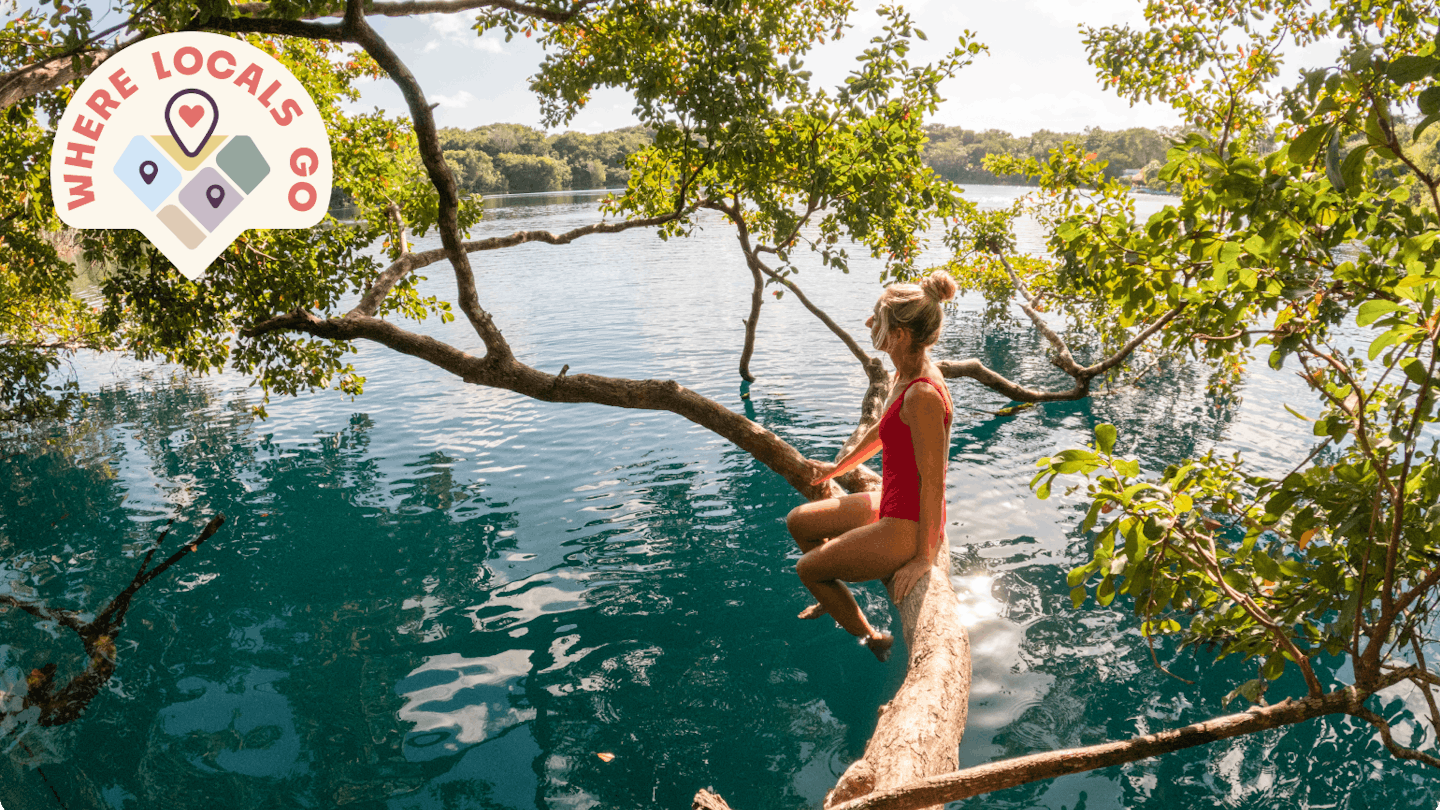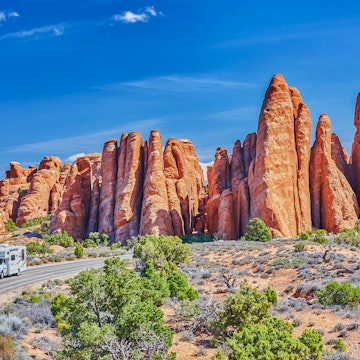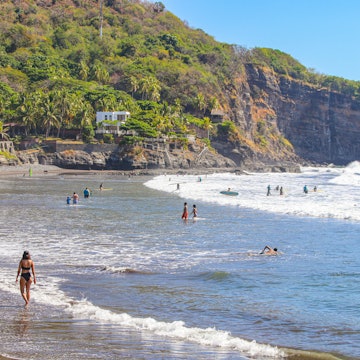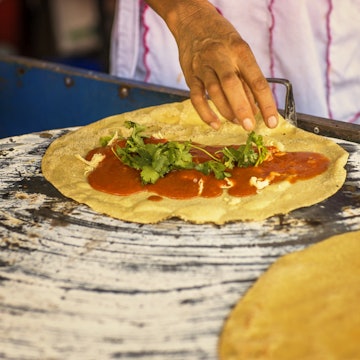
Discover where locals travel in Mexico

Mexico's Bacalar Lagoon is a go-to vacation spot for locals © Getty Images
Deciding where to go in Mexico can give travelers a headache.
Do you head to the cactus-strewn deserts of the north or the cloud forests of Chiapas? Should you visit the beaches and markets of Oaxaca?
Each region entices visitors with distinct cuisines, traditions, languages, and landscapes, offering a wealth to see and do. Indeed, Mexico's appeal goes far beyond its resorts.
We asked our local writers to pick their favorite destinations in Mexico – and they didn't disappoint. From laid-back beach towns and scenic wine and cheese routes to spots that served freshly caught fish by the kilo, this is where the locals go in Mexico.

Sunset hikes and seafood lunches: Melaque
Liza Prado is a travel writer and Mexico guidebook author
My go-to vacay spot is Melaque, Jalisco, a classic Mexican beach town where the streets are made of hard-packed sand, front doors are kept open for the breezes, and mom-and-pop stores overflow with tropical fruits, glass bottle sodas, and portable coolers filled with freshly made tortillas.
And the beach! I dream of it on cold winter days: a five-mile-long bay dotted in whitewashed buildings and palm trees. The surf attracts skimboarders and the sand is gloriously empty most of the year. For beachfront eats, there’s a clutch of thatched-roof restaurants on the northside of the bay where freshly caught fish is served by the kilo, whole and fried.
I always take a pair of sneakers for sunset hikes – the malecón (boardwalk) ends in a well-marked trail that heads up-up-up to the top of a steep bluff. The reward: 360-degree views of the coastline’s dramatic cliffs, lush islets, forgotten bays and tiny Melaque below.
In the evenings, the central plaza becomes the social center, kiosks selling all manner of trinkets and treats, chatter filling the air, and taco stands doing brisk business. I typically stay a stone’s throw away at Red Tree Melaque, an intimate hotel with five updated studio apartments spread across a palm tree-sprinkled with a courtyard pool – a place that always feels like home.

Vineyards, artisan cheese and horse-drawn carriage tours: Querétaro
Originally from Mexico, Jennifer Fernández Solano resides in Valencia, Spain but frequently returns home to travel
When I was young we'd spend weekends at Hacienda Jurica on the outskirts of Santiago de Querétaro, the state capital of Querétaro. Built upon a 16th-century colonial estate, the family-friendly hotel has spacious gardens and offers horse-drawn carriage tours. The city center’s well-preserved Baroque architecture dates to the Spanish colonial era and it's up to par with that of its more famous neighbor, San Miguel de Allende, which is often named as one of the world’s most charming cities. Yet Querétaro remains largely undiscovered by foreign visitors.
While San Miguel de Allende is known for its intricately carved parish church made of pink stones, Querétaro has an iconic rose-stone monument of its own: a 74-arch aqueduct. But it’s not just the architecture that keeps me coming back – the main draw for me these days is the region’s wine and cheese route. As Mexico's second-largest wine-producing area after Baja, vineyards line the roads, making it easy to check out two or three different wineries on the same day. My favorite is De Cote because you can roam freely through the rows of vines and have a picnic at one of its red and white checkered tables. I also like Freixenet, famous for the regional specialty – bubbly. Visit during the August and September harvest season and you'll find events in many of the vineyards.
Once visitors have had their fill of wine tastings, head to Cava Bocanegra, an artisanal cheese cellar and shop close to the town of Tequisquiapan. The cheese boards here come with wonderful views of the vineyard. If you can, stay in the Querétaro old town at somewhere like Hotel Criol. Decked in mint-colored walls, with modern design touches and a cozy private library, the hotel offers tours to the wineries. So there’s no need for anyone to become the designated driver.

Aguachile, whale watching, and laid-back beach culture: Mazatlán
Natalia de la Rosa is a food and travel writer from Mexico City
As someone who travels to eat, I first visited Mazatlán in 2016 and its unrivaled seafood and street food culture have enticed me back ever since. Most restaurants and street vendors here work strictly with the day's catch to create an array of dishes – from spicy caguamanta stew (a ray, shrimp and tomato soup) to aguachile (fresh raw shrimp with a green chili sauce, lime juice, purple onion, and chopped cucumber) and over-the-top seafood tostadas (crunchy flat tortillas).
Once a dynamic commercial seaport on the Pacific coast of Sinaloa – across to the east from the southern tip of the Baja California Península – Mazatlán seems to reveal a new culinary treasure each time I visit. I now know the best aguachile uses shrimp from the Escuinapa estuary region, south of Mazatlán. When I visit, I will always take a taxi from Mazatlán International Airport to the city, so I can stop at the nearby town of Villa Union for a seafood feast at Cuchupetas. This famous family-run joint does the best grilled oysters.
Mazatlán itself is a laid-back beach city rather than a resort location. Visitors can stroll around the streets of Centro Histórico, where French-inspired turn-of-the-century architecture creates a colorful background for the lively social scene at Plaza Machado. You can also cycle along its 21 km-long waterfront, stealing glimpses of the ocean and landmarks like El Faro, one of the world's highest lighthouses. If you want to hit the water, take a boat to Isla de Piedra to dip in its calm waters and relax. Else venture out on a whale-watching expedition during their migratory season (December to April).
The best time to visit is from late October to mid-April when the weather is temperate and not as humid. This is when the seafood is at its best: fresh clams, scallops, oysters, juicy shrimp, snapper, and mackerel. Aguachile is Sinaloa's signature dish, and the Mazatleco version thrives on the quality of the ingredients: raw shrimp in a pool of freshly squeezed lime juice mixed with green chili and topped with cucumber and red onion. Don't miss Mazatlán's mackerel ceviche tostada, either. Taste either at the city's seafood street carts or a sit-down eatery like Mariscos Omar.
Mazatlán offers all-inclusive beachfront accommodation in the Zona Dorada, but staying in a short-term rental (the city has a good range of options) in the Centro Historico area, or a boutique hotel like Casa Lulu, allows you to experience this destination like a local.

Lagoon swimming and temazcal (sweat lodge) sessions: Bacalar
Rosie Bell is a Mexico-based travel journalist
For the last few years as a digital nomad, I have based myself in Playa del Carmen, a city that fills my heart, mind and belly via its beachfront restaurants, yoga spots, coworking cafes and rooftop pools. But when I want a change of pace, I often head to Bacalar, a quieter destination in Quintana Roo, near the Belize border. Mexico's government recognizes Bacalar as a 'Magical Town,' a collection of destinations they've handpicked for their cultural and historic significance.
This beach town without a beach feels like the laidback Tulum of yesteryear –before it became overun by Instagrammers. Famed for its multicolored lagoon, Laguna Bacalar – known as the Lagoon of Seven Colors thanks to its mesmerizing shades of green and blue – the prized activities here include stand-up-paddleboarding tours, boat cruises, kayaking, and lazing in the lagoon hammocks at Los Aluxes.
Chetumal is the closest airport to Bacalar but I get there in just over three hours from Playa del Carmen on the direct, air-conditioned ADO Bus. When in town, I'll go for fresh seafood at Bacalar Beach Club, right by the water. I'll also visit El Manatí, a unique combination of a restaurant, boutique, and gallery with an airy tropical patio. For accommodation, the 18-room Casa Hormiga, close to the lagoon, offers a comfortable stay. It also offers opportunities to engage in local Mayan rituals like cacao ceremonies and steamy sessions in a temazcal, a traditional igloo-shaped sweat lodge.



















